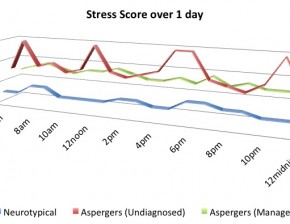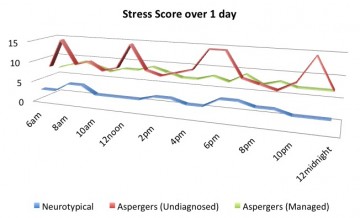Guest blog article written by Sam Warner of Get Your Message Across.
This is Part 2 of Sam Warner’s blog on Autism Spectrum Disorder or ASD (click here for part one) to help employers understand some things they could do to improve the working environment for someone with ASD and get the very best out of a happy, comfortable and productive employee.
ASD isn’t a great label, but it does help to describe a differently-brained set of people that might need a little extra help to be their best at work. Only 15% of all diagnosed adults in UK are in work, and only 10% of those feel supported, respected and safe from ridicule at work.
6. ASD, the Unexpected and Meltdowns
With routine also comes the unexpected and it might be prudent to help team members find ways to accommodate the unexpected that might occur. In a lot of jobs there are variables that can be anticipated and perhaps a portion of the day can be allocated to the unknown that can also be used for catching up on emails, personal development or research. Lets face it no-one should be 100% allocated on any job, it’s setting you up for failure instantly. Should a meltdown occur, give that person a few moments to gather themselves as touching or talking to them could make them worse. Get to know your team members so you can anticipate future meltdowns and possibly diffuse them.
7. ASD plus Behaviour and Stimming
Behaviour is a tricky one for many who have ASD and you might see them watching other team members for cues on how to behave in a given situation. They still might misread it, so its important to let them know gently and privately that it wasn’t the right response. They might pull odd facial expressions when asked questions whilst their brain processes the information much in the way that a computer might. Stimming can be explained as physical movements that the person with ASD does that helps them to feel calm, less anxious and in control. Stimming can take the form of rocking forwards and backwards, playing with hair, or fiddling with a ring on their finger or shaking their hands like they are wet or something else. As long as it does not irritate others or impact their work, surely its acceptable to allow someone to stim as they need to; to feel comfortable and calm.
8. ASD, Eye contact and Language
For some people with ASD eye contact is really challenging and for neurotypicals (not on the spectrum) they can appear shifty, evasive, disinterested and dishonest. The eye to eye contact is very confrontational much in the same way you wouldn’t stare at a dog or a lion and not expect a growl. Sometimes those on the spectrum might fiddle with their phone or doodle a lot or fiddle with a toy whilst listening to a presentation or instructions, this might be so that they can calm their anxious busy mind and listen wholly. It doesn’t mean they are disinterested or being rude, it probably means they are over stimulated visually or they are uncomfortable (they might be too hot, thirsty and worried about something else).
Sometimes Language might seem inappropriate or too little or too much. See no.9 for dealing with this so that they can work well within a team.
9. ASD, Feedback and Evaluation
The key to working with someone with ASD is great evaluation and feedback. It’s really important to let the person know what is working well, so they carry on with that great work or behaviour. When the message is more of a development opportunity its important to use your words very carefully (not just for those with ASD but for everyone) and ensure that all ego and emotion are removed. Specific examples of things that haven’t worked so well, followed quickly by encouragement and support on fixing those things, including training opportunities and mentoring will make any employee feel valued, respected and rewarded with your patience and support.
10. ASD, Reward and Recognition
Finding out how people like to be rewarded is important too as some like a quiet email or handshake from a team leader, whilst others will shine at a public recognition with a shower of applause. Some find that awful as being the centre of attention is dreadful for them and very stressful.
A lot of this advice can be applied to any employee regardless of the way their brain processes information. For a small amount of initial effort, a harmonious team, greater understanding and a productive employee can be gained by employing someone with ASD.
Sam is the successful business owner of Get Your Message Across, which helps people who are terrified of speaking in front of others to find their voice. Sam coaches, trains and evaluates individuals to increase their confidence and actually look for opportunities to speak in the future. She also helps adults and children with Autism (ASD)/Asperger’s and their friends and family to communicate better, find coping mechanisms for various behavioural problems and challenging situations.
If you would like to know more about Sam’s work and how she can help you and your staff, please give her a call on: 07973 490150 or email her: samantha_warner@hotmail.com


